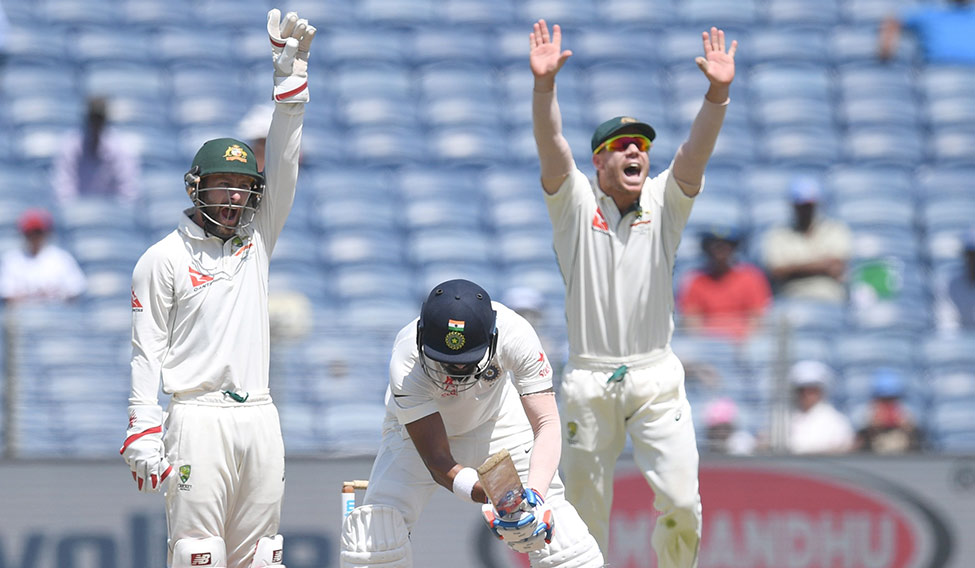When I was part of the Indian team in the 1990s, we had earned a reputation of being tigers at home and lambs overseas. It was true; we were brilliant at home. We prepared vicious, turning pitches, picked three spinners in the side and won Test matches quickly. But, when we went abroad, our confidence dipped the moment we landed at the airport. Suddenly, we weren’t walking with our chests out. We would be overawed by everything we saw there, including the opposition. Sure enough, this reflected in our performance.
Today’s Indian team is different. When the players go abroad, they aren’t as enamoured—foreigners and foreign countries are not a big deal anymore.
The Melbourne Cricket Ground in Australia or the Wanderers in South Africa continues to impress them, but the big difference is that the Indian players today do not think they are any less. This affects their performances, and India compete better overseas, especially in limited overs cricket.
They still don’t win as many Tests as they should, but they are certainly not lambs ready for slaughter. Why, Virat Kohli actually bullies the ‘foreigners’ in their own backyard. He was the first Indian batsman I saw sledging the Australians back. And, he backed the talk with four hundreds in the 2013 series.
We, in the 1990s, would duck and weave against the fast, rising deliveries. Some would fend the short ball and happily walk back to the dressing room. We will be home soon, they would think. Virat, however, stood well outside the batting crease in Australia and hammered every bouncer from the fastest bowler in the world, Mitchell Johnson, in front of midwicket. Johnson had put the fear of God into the English batsmen a few months earlier.
But you know what, we weren’t all bad. We were tigers at home, on all Indian pitches—even if the pitch was a rank turner—which this team is not.
Today’s batsmen are not wary of pace and bounce as we were, but we certainly batted better on extreme, turning pitches.
 Lokesh Rahul flummoxed by an Australian spinner during the first Test in Pune | AFP
Lokesh Rahul flummoxed by an Australian spinner during the first Test in Pune | AFP
India lost the first Test shockingly—they got 105 and 107 in the two innings on a raging turner. Surprising? Yes. But, we had seen this trait of vulnerability on turners against South Africa a couple of years back.
On rank turners, India had scores of 201, 200, 215 and 173. It’s a good thing that South Africa batted worse than India, helping the latter to win the series. While today’s batsmen have gotten better against pace and bounce, they may have taken their eyes off playing spin well on spin-friendly pitches.
Batsmen of the 1990s, as was the culture then, focused a lot on defence, spending many a session developing an immaculate defence against spin.
No one really worked on the power game. But, today’s cricketers spend hours in the gym. They have to. It’s not just Test cricket that they play; the other formats are as mainstream and are bigger draws, too.
Also, if they have to compete with the rest of the world, they have to be strong. Our generation looked like schoolboys in front of the big, strong South Africans. Not these boys, they look the part on a world stage and I feel proud watching that.
Because of their greater strength and fitness, Indian players are better runners between wickets and superior ground fielders. The ball we picked up after it had crossed the boundary, today’s cricketer stops two metres inside the rope by sliding along the ground. Only Jonty Rhodes did that in our time.
However, while getting better at all this, the Indian cricketers of 2017 have not been able to work as much on this one single nuance of cricket—batting against spin on a spin-friendly pitch.
The only way you can survive and excel in these conditions is if you have a good defence, and have faith in your defence. Both these aspects are missing in today’s batsmen. So, on the odd occasion that I see them playing on a raging turner, I don’t feel as envious of them as I do otherwise.








